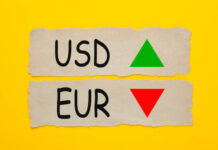Summary: Inflation still heading above the 3% target
Today’s CPI inflation figure for China for February surprised sharply on the downside, falling to 0.8% y/y (consensus 1.7% y/y, previous 2.5% y/y).
The decline was due mainly to a big fall in food prices, from 2.7% y/y to -4.3% y/y.
Core CPI (excluding food) also fell slightly, to 2.2% y/y from 2.5% y/y in January. However, the trend is still up (see chart).
It is likely the fall in inflation is due to the end of Chinese New Year and we expect to see a rebound in March.
PPI inflation rose more than expected to 7.8% y/y – the highest rate since 2008. It is more than signalled by commodity prices and suggests pricing power has improved. However, we expect PPI to peak soon.
Weaker CPI inflation implies downside risk to our forecast of two rate hikes in H1. However, as we still see an overshoot of the 3% target in the spring (due to pass-through from PPI), we continue to expect policy tightening.
Core inflation set to overshoot target in H1

CPI inflation still expected to rise above target in H1
PPI and CPI diverging in February. We look for some pass-through to push CPI inflation above 3% during the spring months.

The increase in commodity prices points to an overshoot of the 3% target before too long.

Lower inflation adds downside risk to our forecast of two hikes
Higher inflation needed for PBoC to hike. Our base case is still two hikes in H1, as we look for a rebound in CPI inflation.

So far, China has targeted tightening towards the financial system through tighter liquidity and raising the repo rate by 10bp.

Latest rise in PPI not explained by commodity prices
Rise in PPI inflation not fully explained by commodity prices – this points to broader price pressure.

PMI and monthly momentum has peaked but is still at a fairly high level.

Moderation in commodity prices set to lower inflation pressure
We should be close to a peak…

… if metal prices flatten out as we forecast

Peak in M1 growth also points to a decline in PPI inflation soon















